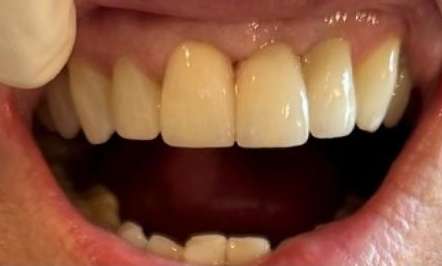Bridges
What is a Bridge?
Dental bridge is a fixed dental restoration used to replace one or more missing teeth. It consists of one or more artificial teeth (pontics) that are anchored to adjacent natural teeth or dental implants, called abutments. Dental bridges are designed to restore function, aesthetics, and to prevent adjacent teeth from shifting. They can be made from various materials, including porcelain, metal alloys, or a combination of both, depending on the specific needs and preferences of the patient.
Benefits of Bridges
-
Restoration of Function: Bridges restore the ability to chew and speak properly, which can be compromised by missing teeth.
-
Aesthetic Improvement: Bridges fill in gaps left by missing teeth, improving the appearance of the smile and restoring facial contours.
-
Prevention of Teeth Shifting: By filling the space left by missing teeth, bridges help prevent adjacent teeth from shifting out of position.
-
Maintaining Facial Structure: Missing teeth can lead to sagging of facial muscles and a prematurely aged appearance. Bridges help maintain the natural shape and structure of the face.
-
Durability: Properly cared for bridges can last many years, providing a long-term solution for tooth replacement.
-
Cost-Effectiveness: Compared to other tooth replacement options like implants, bridges can be a more cost-effective solution for some patients.
-
Non-Invasive Procedure: For traditional bridges, the procedure typically involves minimal discomfort and does not require surgery like dental implants.
Types of Bridges at our office
-
Traditional Dental Bridge: This type involves creating a crown for the tooth or implant on either side of the missing tooth, with a pontic (artificial tooth) in between.
-
Cantilever Bridge: This bridge is used when there are adjacent teeth on only one side of the missing tooth or teeth.
-
Maryland Bridge (Resin-Bonded Bridge): This bridge consists of a pontic that is held in place by a metal or porcelain framework bonded onto the backs of adjacent teeth.
-
Implant-Supported Bridge: This type of bridge is supported by dental implants rather than natural teeth. It is used when multiple teeth are missing or when the missing teeth are not adjacent.


